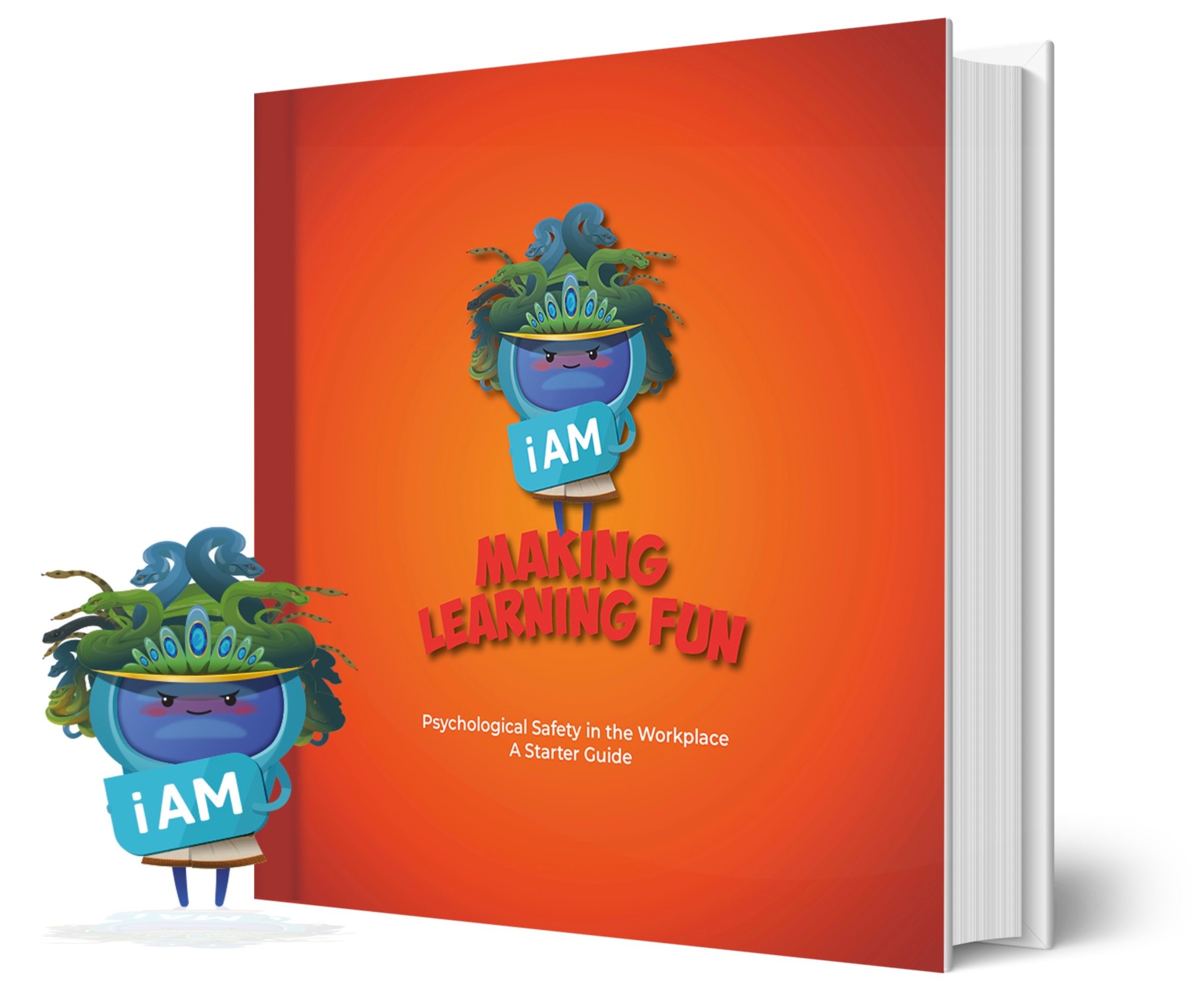The shadow domain – what’s happening on the dark side?
They were struggling to recruit and good people were walking away. Every day was firefighting and a new HR issue. Disconnect, lack of motivation, struggling sales, you name it; senior leadership were at a loss. So, they brought in an external consultant to pop the hood and take an objective look at the whole shebang.
After intensive interviews with a range of employees, reviewing the documented policies and procedures and observing teams, the consultant shared a surprising report.
She said there were two worlds running in tandem; the first was set by leadership: the formal hierarchy, the top-down instructions, the process guides and aspired values. The second world was a thriving shadow culture. That is, what was really happening beyond the paperwork and official meetings, and it was extensive.
To a very extreme degree, employees were politely nodding at the leadership team’s directive, but behind the scenes, forging their own ecosystem based on collaboration, alliances, and ways of working which felt smarter and faster.
Why?
In this specific context (thankfully, a previous career), it was the side effect of a leadership team who were unwilling to listen to their people or even at times (oh, the stories I could share), treat them like people at all. They were also completely disinterested in the day-to-day experience of life in their business.
Toxic behaviours from up high prompted the creation of a shadow domain – an underbelly of activity in complete contrast to what we were told to do. There were benefits – we were innovative, experimental and formed fierce friendships. We went above and beyond, not to make money for a faceless board, but to help one another and because we had standards we set for ourselves to do good work for our customers. We worked incredibly hard. To an extent, we cocooned one another, through solidarity and humour from the surrounding toxicity - though this also endeared us to endure for far too long.
There were consequences – we were disrespected and in turn disrespectful. We weren’t able to change or influence anything in a meaningful way and felt powerless. The gap between the leaders and the people was unhealthy and unsustainable for all involved.
And the outcome of the changes once the external report was delivered? Leadership binned the consultant’s report and ignored all the recommendations for immediate action. An interesting decision.
Are shadow domains always toxic?
Just like today’s Disney villains, shadow domains are not inherently good or evil – they’re inevitable and can be complicated.
‘Sometimes these informal channels support what the formal organisation is trying to do; at other times, they act to subvert it.’ Michael Watkins, The First 90 Days.
My personal example is one version, fuelled out of necessity and survival, but there are lots of different things which provoke microclimates in a business, and they’re not always damaging.
Watkins defines them simply as, ‘the informal set of processes and alliances that exist in the shadow of the formal structure and strongly influence how work actually gets done.’
They can be complementary and good for business – giving birth to new, exciting ways of thinking and operating. They can be integral to a sense of belonging, a collection of tribes, friendships and coalitions which contribute to enjoyable working life.
‘The formal organisation may own the tooling, the technology, the physical space and the engineered product, but the social system owns the trust, the innovative thought, the creativity, and the momentum.’ Julian Stodd, A State of Radical Complexity.
By definition, shadows can also be brilliant at concealing. In the shadow domain, discrimination, unchecked bias and inequity can run rife. How many senior leaders can say they have a comprehensive understanding of the goings on in their business? (well, perhaps if they’ve installed spy software, but that opens up a whole other branch related to trust that could be a blog by itself). Whilst it’s not advisable or feasible that they’re in the detail, if they don’t at least take an interest in how things really are and have open and honest conversations, they might be unknowingly permitting a toxic behemoth.
‘Even the healthiest cultures have pockets of toxicity.’ Charlie Sull, How toxic work cultures are driving the great resignation.
The Culture Gap
There is always going to be a gap, even a small one, between the prescribed vision from leaders and the true employee experience, especially in a scaling and hyper-growth business. It can be really challenging to maintain a healthy culture (already naturally in flux) with the regular arrival of new faces, functions and necessary delegation.
And it’s not the mere creation of additional layers of responsibility and remit which creates a dysfunctional shadow culture, but the disconnect between those layers. Representatives are put in place – heads of, team leaders, managers etc., and the intention is always that they role model the aspired behaviours set by (or in a beautiful work, co-created with) the senior leadership team.
I personally believe that the flimsier or more conflicted things are at the top (consensus, purpose, values, strategy), as a business scales, the more likely the swift emergence of a shadow domain. In the face of a lack of clarity and direction, we will forge our own methods to get stuff done, whether driven by cold calculation, gut instinct or simply repeating what we witness from those we invest in.
Many of Steven Bartlett’s ‘Diary of a CEO’ interviews discuss the idea that a gap between whom a person presents or pretends to be and who they really are, creates at best unhappiness and at worst some serious health problems.
I think about business culture in much the same way. If the delta is significant between what’s projected and what’s lived, peppered with hypocrisy and inconsistency, expect scary monsters to crawl through.
Culture is the shadow of the leader
In our information-gathering new joiner state, we often look up to try and understand what’s expected and encouraged within our specific business. Just like a child absorbing your first example of what it is to be human from your caregiver, your manager is the wise gatekeeper of this uncharted world before you. There to envelop you in the status quo, established rituals and key relationships.
Or are they?
Have you ever been in a situation where your manager publicly gives the nod to the higher-ups, then turns to you after the meeting, ‘Yeah, so…we’re not going to do that. Here’s how it’s going to work instead…’.
If each department has been left to its own devices, made its own decisions on how things run, and set its own culture and off-the-books hierarchy, there can be a rich world of social politics and shadow domains to navigate. It could be one rogue manager, or team, insidious or benign, but one thing’s for sure, companies are rarely as straightforward as the employee handbook would have you believe.
‘“And if you want an organization that’s really operating on all cylinders, you want every organization team to be operating within the same rules of engagement, the same kind of team norms, the ways in which people feel good, that if they are to transfer from one business unit to another, that it’s, generally speaking, a similar feeling of trust, openness, collaboration.” Dan Pontefract, Does your workplace have a ‘shadow’ culture?.
Divergent communities
It’s more likely to find subcultures in businesses where logistics divide people – be it different countries, offices or working patterns. Post-covid, many small and scaling businesses that previously had everyone in one place, at one time, are seeing a rapid and greater diversity of experience.
Charlie Sull (on Brené Brown’s Dare to Lead podcast), asks: ‘What does culture mean when you have 3 classes or castes of people?’ (Referring to office-based, fully remote and hybrid.)
In this sense we can think of ‘shadow’ as what is ‘out of sight.’ For many, a once largely office-locked culture is now out in the ether. It’s evolving in Zoom conversations and direct messages on Teams. It’s being challenged by ‘us and them’ thinking and reality. It’s the have and have-nots for in-person breakfast, lunchtime drinks and long commutes.
That’s not to say that these groups can’t all emanate one company culture, or that the culture isn’t strong enough to surpass walls and consistently thrive, just that it requires concentrated effort to adapt and temperature check. If the previous focus was only on observing what was in front of you, asking and listening need to become part of your tool kit, and quickly. Culture is being stretched and tested by this new normal and it requires our rapt attention.
Who you know is more powerful than what you know
‘Execution. When it comes time to get things done, which matters more — a deep understanding of processes or knowing the right people?’ Michael Watkins, The First 90 Days.
Social politics, Informal networks, Social hierarchy = shadows.
Dismissing them or refusing to engage can, on the surface, feel like the mature, adult decision. You’re professional and rising above it. It’s unpleasant (for me at least) to think of my colleagues in terms of an influence map. To consider investing time in someone purely for the clout they might lend me in return.
And we’ve all been on the receiving end of this done badly and opaquely; you’re sidled up to on a false pretence; asked how your weekend was. You can already see the request in their eyes – the palpable transactional nature of the whole thing is beyond uncomfortable: ‘Sounds lovely. Could you do this small thing for me?’
A RACI matrix is one thing, it’s social politics lite – an awareness of who is Responsible, Accountable, needs to be Consulted and needs to be Informed in any given situation. That’s just efficient business, right?
But in ‘The First 90 Days’ (a truly cracking read for anyone joining a new business), Watkins suggests you expand this concept much further than project planning, advocating the development of ‘relationship bank accounts.’ That is, identifying, solidifying and cultivating relationships with people who hold various sources of power, and crucially those outside of ‘formal authority.’ You never know when you might need buy-in, support, or back-up.
This advice is a small slice of the comprehensive strategy he outlines in the book. And whilst I initially recoiled at what looks to be machiavellian-esque scheming, I have to admit that this is, albeit with great subtlety, what the most inspiring leaders I’ve worked with do.
Perhaps they’ve not sketched out the intricate landscape of potential allies and opponents, or deconstructed meetings based on who really listens to who, existing connections and control, but they’re all fantastic (whether orchestrated or unconscious) at building social capital and strong relationships. And those relationships, that widespread influence and impact applied in the right places, can take you very far indeed.
The trick then surely, is to master this shadow reality, this intricate network of who really holds power and persuasion, and make it all look natural, even if it's just part of your dastardly plan for domination?
Because, although we’d like to think succeeding at work comes down to pure and simple meritocracy, where just showing up and technically smashing it will pay dividends ‘likability’ is so often the prized legal tender (or at least the two together are a winning combination).
It’s perhaps the case in every business or industry, but it’s certainly food for thought.
Bringing it all into the light
How do you interrogate your culture or illuminate what’s really going on in the shadows?
You could hire an external consultant, ask them to perform an intensive investigation, and then completely ignore the findings.
Okay, please don’t do that. A few serious suggestions include:
- Nurture a feedback culture, where everyone has opportunities to share their thoughts, concerns and ideas and respond in a way that ensures people feel valued and involved. Anonymous avenues typically encourage greater honesty.
- Check out our psychological safety resources which include blogs, further reading and health check audits – we’ve included some big questions and inspirational activities
- Build your values and desired behaviours into your recruitment process and L&D provision – especially for anyone who will have responsibility for others
- Linked to the above, invest in manager and leader development – being great at doing a thing doesn’t ensure people will be great at looking after the people doing the thing (Simon Sinek originally made this point in a much more articulate way).
- Spend time with different people and different teams in different environments – don’t assume that the experience of one individual or group represents the full story
- Be prepared to discover difficult things and have difficult conversations. A business and its leadership team will never be perfect, but it’s the ones that walk the walk, and don’t only sit on the org values like smug chickens, that really inspire and galvanise positive change.
‘When these tough conversations don’t happen or get endlessly delayed, the shadow can become the dominant aspect of the culture itself.’ Matt Auron, The shadow side of organizational culture.
Beware the cost of doing nothing
Problems arise when subcultures negatively impact the business in any way. And the price you pay can be tricky to quantify and make tangible.
I talk about this a lot in L&D, how much it costs not to act, not to address, not to change. It can be really powerful to flip the budget case from the cost of doing something, to the cost of doing nada. It can often be much more considerable and include penalties such as reputational damage, legal action and risks to life.
That last one sounds dramatic but think about it, if in this particular shadow, health and safety training isn’t taken seriously, precautions are skipped or bullying and harassment are endemic (only a few examples) – these things present serious threats to a business and the wellbeing of people within it.
If your shadow domain(s) is driving good people away and a haven for malpractice, your bottom line will suffer too.
‘It’s (toxic culture) an enormous cost but it’s not living on anyone’s income statement.’ Charlie Sull How toxic work cultures are driving the great resignation.
More than a bit of hide and seek
I think we can all agree, the shadow domain is a complex place. Beneficial, disastrous or somewhere in-between, deciding this starts with uncovering its true impact.
I’m certain on only a few things - pretending it doesn’t exist won’t make it go away and an intensive witch hunt, hell-bent on conformity and perfection, won’t solve anything (dictatorships don’t tend to work well).
I hope this meandering blog has poked a few holes in the subject and got you thinking about your own business and what lies beneath. Perhaps you’ve even realised how frequently you step into the shadows yourself.
‘We cannot afford for one to collapse the other: if the formal system triumphs, it looks safe but lacks agility, and if the social system triumphs, we have fun, but struggle to achieve effect at scale.’ Julian Stodd, A State of Radical Complexity.
Address the shadow domain in your workplace
If you're looking to make your workplace a happier and more productive place to be, take a look at our Psychological Safety eLearning Collection or download our FREE Psychological Safety Starter Kit, containing a range of resources to help you start creating a happier workplace culture!

Gemma Glover
Head of People



